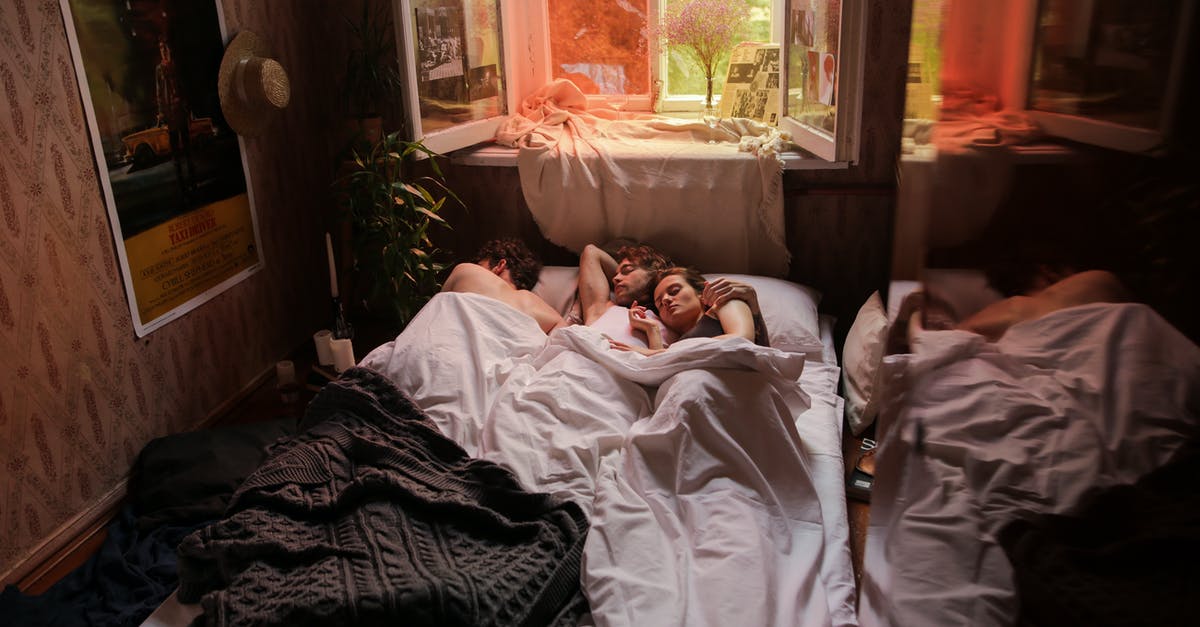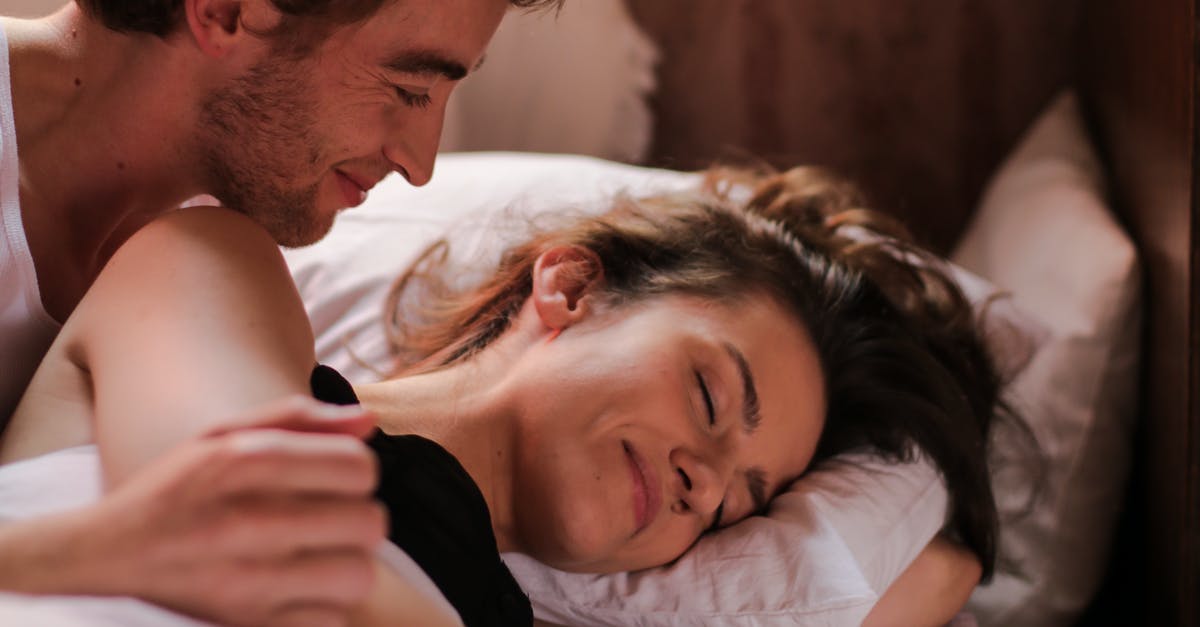How does one sleep in a sleeper train in Europe?

Planning to travel from Germany through several other countries eastward on a sleeper train, I wonder what am I expected to encounter and how am I expected to dress? The tickets say 4 beds per compartment. As I guess the compartments don't have a place to change, is everyone expected to sleep in their street clothes? Hiking through the town all day then taking off the shoes in a small compartment might also cause unpleasant smells. Are there any places to change / wash ourselves, or are passengers expected to find someplace to shower before boarding the train?
Best Answer
My experience on French sleeper trains is that people get changed lying down on their bunk. Those who require extra privacy will slide into the sleeping blanket before removing their clothes. The top bunk will also guarantee you extra privacy since it's only visible by the adjacent bunk and not by the ones below.
There is no dress code for sleeper trains. Some people sleep in their normal clothes. I've seen soldiers sleep in their uniforms, and women changing to sleep in their night gowns. My experience is that nobody really cares what you wear. All in all you should pick clothes which are comfortable for you. In terms of temperature, keep a jumper close to you in case you are cold. Consider that the blanket might be made of synthetic material. If that's the case it'll be warm, maybe even too warm in certain trains.
You are not expected to shower before boarding. Nevertheless, smelly travellers, and their smelly shoes/clothes, can cause discomfort to others in the confined space that is the sleeper compartment. My advice is that you find a place to get cleaned/remove body odour before getting to sleep in the compartment. Consider carrying wet wipes which you can use to clean up in the train toilet/washroom. Some stations have showers so you could consider using those. Nobody forces you to go straight to the compartment once on the train. If you are afraid of having smelly shoes, you can take them off outside the compartment and hang around in the train corridor for a while waiting for part of the smell to fade away.
If you have particular sleeping needs, pack your gear for sleeping. Earplugs, sleeping mask, pillow, etc. Plugs and pillow are usually provided but you might want to carry your own or need extras. Your fellow travellers can be snoring bears, crying babies, sleep-talking behemoths, as well as normal nice people. Say hello when you meet, tell them where you'll be stopping so that they expect the noise when you wake up, be friendly and smile.
The compartment can be locked from the inside. You'll have to trust your fellow travellers to always lock it at night, and you should probably do the same. You should also keep your valuables with you at all times.
Finally, don't worry too much about the journey. It usually goes very fast: you get in the train, store away your luggage, get changed, and lie down to sleep. The time at which sleeper trains leave usually ensures that you'll be tired enough once you board. In my experience you'll sleep like a log between 00:00 and 05:00. During this period the train doesn't stop very often and rolls at a comfortable cruise speed. After 05:00 the train usually accelerates and will begin serving passenger stations (the French SNCF says no stops between 00:00 and 05:30 for example). The deceleration of a stopping train is usually what wakes me up.
Pictures about "How does one sleep in a sleeper train in Europe?"



Do European night trains have beds?
Reservations for night trainsA reservation guarantees you a seat or a bed on the train. Night trains have a number of accommodation options, ranging from reclining seats to single cabins with private bathrooms. You will pay a higher reservation fee for the more luxurious options.How do you sleep on a sleeper train?
I always aim for a bottom berth and facing the direction of travel. The bottom berth gives you control of the table and of course avoids any undignified falling out bed in on the way to the bathroom in the middle of the night. It's usually cooler down under and you can watch the sunrise out of the window from your bed.Can you sleep on the Eurorail?
Reservations for night trains are always mandatory. The reservation fee depends upon the type of seat or sleeping accommodation you choose. You can make your reservations through our Reservation Service.Do European sleeper trains have showers?
Standard Sleeper Compartments Choose between a triple (three berths), double (two berths), or a single (one berth) compartment. Each compartment features its own washing facility including toiletries, towels, mirror, power outlet, and slippers. At the end of each coach, there is a washing facility, toilet, and shower.WHY YOU SHOULD TRAVEL in Europe by all-night Sleeper Trains I Interrail Pass Eurail Pass Global Pass
More answers regarding how does one sleep in a sleeper train in Europe?
Answer 2
If you're travelling in a small group (e.g. a couple), you can also get a compartment to yourselves for a fairly small extra charge - the Jan Kiepura from Cologne to Warsaw has compartments from 1 to 3 berths as well as the 4 or 6 berth couchettes - or if you're feeling flush, also has 1 and 2 berth deluxe compartments with a private shower and toilet.
Edit: It looks like the German CNL trains also have the same combinations - look for Schlafwagen (sleeping car)
Answer 3
Here is some advice out of experience, at least concerning the sleeping part.
In Europe, first and foremost, there are two kinds of sleeper accomodation : couchette (berth) and sleeping car. I will not go through the seated car which is best avoided it is for a small 1-hour journey.
Couchette is usually 6 beds in a room, or 4 beds like on the above picture. Most trains in Europe, including German ones now operated by OBB as Nightjets, have this style. The 4-bed option allows more space and the ability to sit comfortably on each without crouching. Ticket for 4-bed is a bit more expensive, just slightly, and is worth it IMHO. Beds are identical; the 4-bed version is just a 6-bed cabin having its middle beds folded away.
Bedding for couchettes is usually made of a pillow, a sheet with plaid or some sort of light sleepsack. Compartments are mixed gender, except for women who have a women-only option available for increased safety. When you arrive, it is up to you to unpack the sheets and lay them on your bed... rather called a bunk or berth. In the morning, you may or may not get a light snack as part of the fare.
One notable exception in couchettes is the French SNCF system. They offer 2nd class and 1st class couchettes. First class couchettes are wider and more comfortable, and the compartment is wider as well.
The other sleeping option is the sleeping car or sleeper. If couchettes are the cheaper option, similar to how hostels work, sleepers are more like the hotel and a tad more expensive. Compared to couchettes:
- Maximum of 3 beds in the compartment
- A small washbasin is present
- Beds are real with a frame and mattress, and they should be ready with tucked blankets and real pillows
- No mixed gender; all reservations in a compartment are same-sex unless a group books the whole compartment
- A shower is available at the end of the car for sleepers (some exceptions may apply); couchettes only provide a washroom with a basin. It is possible to upgrade to a deluxe compartment where an en-suite bathroom with toilet and shower is directly connected.
- In some trains, it is possible to open an interconnecting door and create a bigger compartment for a large group.
- Full breakfast service (depends on the railway)
From my experience : having access to the shower is a game changer. And I had moments where I did not have access to a shower at all, even if booked in sleeper. For instance, OBB Nightjet double-deck sleeping cars do not have the communal shower; only deluxe rooms can use their en-suite ones. Also, during a Vienna-Bucharest trip on board a Romanian sleeper, the shower was not working. But the provided bedding was awesome, even better than the one provided by Austrian railways.
Noteworthy thing that can wake you up in the middle of the night, anyway, and maybe THE things:
1 - Shunting operations
It is common for night trains to split in the middle of the night. One compound train may leave as a single unit then get cut off into two sections at 3am; the individual sections then proceed to their respective destinations.
For instance, from Zurich to Vienna, it is a 3-section compound train that leaves Zürich HB in the evening. The train has parts which are bound for Budapest and Prague.
When the train reaches Salzburg at around 3am, the shunting operations begin. Czech and Hungarian parts are detached. Another part coming from Italy is attached to form the compound that will reach Vienna a few hours later. The train remains in the Salzburg station for one full hour.
Performing those operations requires unhitching the engine, which cuts the auxiliary power. This auxiliary power runs the A/C that stabilizes the temperature inside the compartments. When it happens, the humming noise of the A/C stops, which can be enough to wake up some light sleepers. If not, the room can get a little hotter after a while and the temperature change may be another wake-up trigger. Then, even if ground crews do their best to maneuver train cars as smoothly as possible, there is an inevitable shake and audible shock when cars are assembled together to form a longer train. When the train is standing still, anyway, an idle engine is connected to resume auxiliary power and let the A/C running again.
In the opposite scenario, maybe you board the train when it is still standing at the terminus station for departure, and auxiliary power is not fully applied yet. You get to sleep, then the train departs, A/C kicks in and changes the temperature. For this reason, always check the temperature knob setting next to the compartment door.
2 - Timing stop
Even if there is no train rearrangement during the trip, it is possible that the train makes a long stop around the same hours for timing reasons. Maybe the stretch, if run at normal speed for the entire trip, would make you reach your destination at 5am; such stops are done to ensure arrival time is more suitable like 7am.
3 - Winding railroad
This actually depends on the line.
If a significant section of the railway goes through some mountaineous terrain, it may be winding. A train alternating left and right turns will slightly bank on either side at each turn, making it rock sideways like a boat. Since beds are positioned in a perpendicular fashion, the feeling can be an alternance of being upright and upside-down. This rocking movement can be inconvenient for some passengers and make sleep difficult as the train travels through the winding section. It would not happen with longitudinal beds, like Amtrak roomettes.
Winding stretches can be found on:
- Paris - Toulouse - Latour-de-Carol: south of Limoges for a couple of hours
- Zürich HB - Hamburg: a bit before Hannover, around 3-4am
- Zürich HB - Vienna: around 2am
4 - Customs / immigration checks
Sleeper trains cover long distances and it is common for them to cross borders. In western Europe, within the Schengen area, this is not an issue although some exceptions happen.
Further towards the east, it is a different story. The train stops in the last station of country A, at something like 2-3AM, officers knock at compartment doors, wake passengers up for exit checks, including checking passports. Afterwards, the train proceeds to the first station of country B, and the same show takes place for entry. In some rare cases, you may even need to get off the train and complete some procedures in the station at such wee hours.
My experience on that point:
- Vienna-Bucharest has a passport check at 3AM at the Hungary-Romania border. Actually two checks which are 20 minutes apart.
- Berlin-Zurich has German or Swiss customs officers boarding at the last German station around 6AM and performing random bag checks while the train travels towards the Swiss border. They knocked on my door, waking me up to check my bags. Because, although Switzerland is part of Schengen, it has its own rules concerning imported goods.
Sources: Stack Exchange - This article follows the attribution requirements of Stack Exchange and is licensed under CC BY-SA 3.0.
